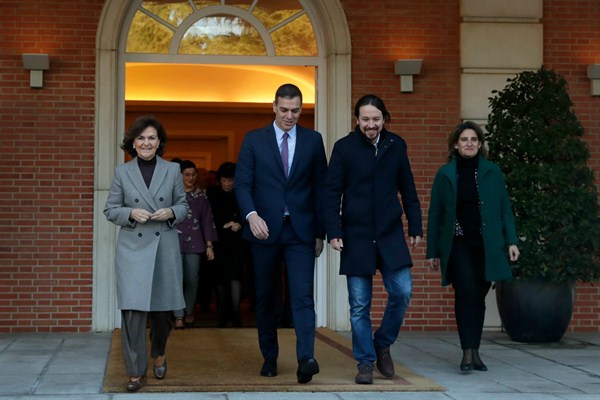Spanish Prime Minister Pedro Sanchez’s new Cabinet was sworn in last week, marking the official start of Spain’s first coalition government since its democratic transition in the 1970s. Sanchez’s Socialist Party won a general election in November but failed to secure an outright majority in the legislature. After weeks of negotiations, the lower house of Spain’s parliament earlier this month narrowly approved Sanchez’s proposal for a coalition with the far-left Podemos party, by 167 votes to 165, with 18 abstentions.
From a secessionist push in the northeastern region of Catalonia to the fracturing of its two-party system, long dominated by the Socialists and the traditionally conservative Popular Party, Spain’s politics has been marked by deep cleavages over the past four years. The new coalition government is thus a remarkable development and a welcome, albeit fragile, sign of stability. Yet while Sanchez and his junior coalition partner, Deputy Prime Minister Pablo Iglesias of Podemos, have been making a great show of unity, they are running a minority government that faces deep challenges, and its durability, let alone its success, will likely be conditioned by Catalan separatist ambitions.
Spain’s new government is in line with a trend toward coalition governments across Europe. From Sweden and Denmark to France and Italy, traditional mainstream parties have lost power amid widespread political fragmentation. However, it took Spain four elections in four years to get there, mostly because its constitution, which was enacted in 1978, effectively favors a two-party system. This was seen as a more stable option during the transitional period that followed the death of dictator Francisco Franco in 1975. Despite that preference, new parties such as Podemos, the center-right Citizens or Ciudadanos party, and finally, the far-right Vox were able to claw their way into the system in recent years by winning a big enough chunk of the vote to complicate politics for the Socialists and the Popular Party.

